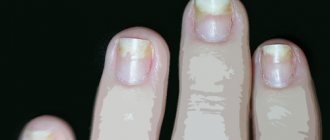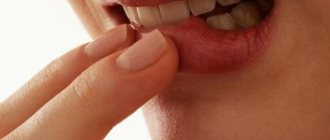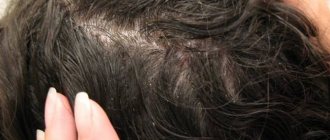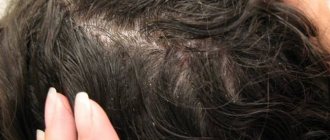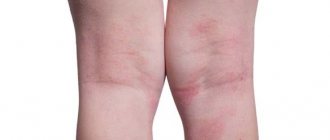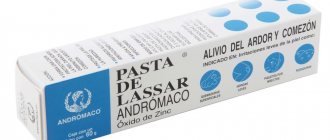Causes of the disease
The problem of an ingrown toenail is caused by:
- Injuries to the nails and toes (a single strong blow or constant pressure on the toe).
- Individual characteristics of the nail structure (overdeveloped nail bed, irregular nail shape), hereditary predisposition.
- Cutting corners while trimming toenails.
- Flat feet (with flat feet, body weight is distributed unevenly, and increased stress may be placed on the toes).
- Fungal diseases of the feet (infection changes the structure and shape of the nail, which increases the risk of developing the disease).
- Constantly wearing narrow or tight shoes (the toes become compressed and blood circulation in them is impaired).
- High levels of calcium in the blood (impairments in the structure and growth of nails are noted).
- Disorders of metabolic processes in the nail plate, toes (observed in heart failure, diabetes, etc.).
If the cause of an ingrown toenail cannot be understood, they speak of an idiopathic ingrown nail.
Options for surgeries at the clinic
Regular or simple removal
We resect the ingrown edge of the nail plate. Using a Volkmann spoon, we scrape out pathological granulations and treat the growth zone.
Cost - 2500 rubles
Radio wave removal
We remove the ingrown edge of the nail and pathological granulations. We treat the growth zone with radio wave electrodes (Surgitron or Fotek E81M). They give reliable results
.
Cost - 3500 rubles
Operation according to Schmieden
Resection of
the ingrown edge of the nail plasty with excision of the ridge and part of the bed. We apply stitches (atraumatic suture material). We use this type of intervention in advanced situations or in case of relapse.
Cost - 4500 rubles
Symptoms of an ingrown toenail
When an ingrown nail occurs, the periungual fold becomes inflamed and swelling occurs. When pressing on the changed area, the patient experiences acute pain. For the same reason, he cannot wear narrow and closed shoes.
Often, an ingrown toenail begins to tear and fester. This indicates the addition of an infection. In this situation, it is important to immediately consult a doctor, otherwise the entire foot will be involved in the pathological process.
If you experience similar symptoms, consult your doctor
. It is easier to prevent a disease than to deal with the consequences.
Clinical picture
An ingrown nail injures soft tissues and a small wound defect appears. Acute inflammation (pain, swelling, redness) appears in the wound area. Usually the most disturbing thing is the pain, which intensifies with movement and walking. If the process is started at this stage, it becomes synchronized. The color of the finger becomes bluish. Dark tissue (pathological granulations or “wild meat”) and purulent discharge appear from under the nail.
Diagnosis of the disease
Surgeons and podologists treat ingrown toenails. To make a diagnosis, the doctor examines the foot. If he deems it necessary, the patient may be prescribed:
- OAM;
- UAC;
- x-ray of the foot (indicated if the doctor suspects osteomyelitis, osteophyte);
- bacteriological examination (necessary if an ingrown toenail is accompanied by suppuration, to determine the microorganisms that caused the disease and their sensitivity to antibacterial drugs).
Based on the diagnostic results, the doctor decides how to remove the ingrown toenail.
Carrying out the procedure
The manipulation is carried out in several successive stages. First of all, the patient undergoes all the necessary preparation: he takes tests and undergoes additional examinations. The actual procedure for removing an ingrown nail plate includes:
- the patient is given a drug containing anesthetics (drugs similar to lidocaine);
- the injection is injected into the base of the finger on both sides so that the injected medications work faster;
- after 5-7 minutes, local anesthesia begins to take effect;
- After this, the damaged and ingrown part of the nail plate is completely burned with a laser beam.
During the procedure, not only the nail process is removed, but also the growth zone of the plate.
In this way, it is possible to stop the fungus if it develops due to the incorrect position of the process, and the growth of the nail in the future is prevented.
The final stage of laser removal is fixing an antibacterial bandage to the treated area of the nail. After the mini-surgery, the patient can return home independently with care instructions issued by the attending physician.
Is an ingrown toenail dangerous?
Treatment of an ingrown toenail must be carried out. Otherwise, the patient will experience severe pain, which will not allow him to move, sleep and work normally. The development of the following complications cannot be ruled out:
- formation of an abscess on the finger;
- gangrene (the tissue of the inflamed finger becomes dead);
- osteomyelitis (purulent inflammation spreads to the bone).
An ingrown toenail is especially dangerous for people who suffer from diabetes, atherosclerosis, varicose veins, and obliterating endarteritis. In them, the infection can spread to the lower leg or foot, and this is fraught with gangrene and amputation.
Surgery
The operation
is performed on an outpatient basis under general anesthesia according to Oberst-Lukashevich (Novocaine, lidocaine and others).
The drug is administered in 2.0 - 4.0 ml. with a very small needle in the projection of the neurovascular bundles at the base of the finger. We most often use an insulin syringe. To bleed the finger, provide good visualization and prevent bleeding, we use a rubber flagellum. The duration of the operation is usually 5 - 30 minutes.
Risk group for ingrown toenails
More often than others, the question of how to cure an ingrown toenail is faced by people who:
- choose the wrong shoes;
- are overweight;
- suffer from fungal infections of the feet;
- have longitudinal/transverse flat feet;
- suffer from diseases that lead to deformation of the nail plate (warts, lichen, psoriasis);
- prone to ingrowth;
- suffer from hyperhidrosis of the feet;
- have undergone radiation or chemotherapy;
- suffer from endocrine diseases, diabetes;
- pregnant women, teenagers (due to rapid weight gain).
After removal
After the intervention, apply an aseptic bandage. The patient must prepare soft, loose shoes in advance, which he will wear immediately after the operation. It would be better if it were two sizes larger. With a bandage on your finger, it is difficult to put on what you usually wore on your leg. At our clinic we have a special long shoehorn that makes it convenient to put on your shoes. After returning home, you should try not to walk unnecessarily for the first 24 hours. The postoperative wound bleeds and the bandage may become saturated with blood. If this happens, you need to additionally bandage your finger yourself.
How to behave after surgery
Resection is a fairly serious operation that requires a long recovery. The treated area will be sore at first. Complete healing occurs within a month, and control is required at all times: to protect the nail bed as much as possible from infection. They also resort to the following measures:
- For three to five days, treat the operated area with antiseptic agents, for example, hydrogen peroxide or chlorhexidine, use antibacterial ointments (Gentaxan, Levomekol, etc.), and bandage the finger with sterile materials. Then bandage every other day.
- In the first days, it is advisable not to step on your foot at all, and then adhere to a gentle regime and avoid stress.
- If you experience severe discomfort, you can take painkillers.
- Only wide shoes are allowed so that the materials do not come into contact with the sore toe.
Radio wave method
The modern technique is based on the impact of high-frequency waves on the damaged area of the skin and nail plate. The advantages of this technology include high efficiency and absence of pain during the procedure. The radio wave method is characterized by a low degree of injury and short rehabilitation.
The disadvantages of the method include the risk of relapse: if the doctor incorrectly calculates the power of the effect, it will not be possible to completely stop the disease. The disadvantages of radio wave removal include the high cost of the procedure. To choose the appropriate method for removing an ingrown toenail, it is necessary to undergo additional examinations of the body. Identifying the root cause of onychocryptosis will prevent re-ingrowing of the nail plate.
More fresh and relevant information about health on our Telegram channel. Subscribe: https://t.me/foodandhealthru
We will be grateful if you use the buttons:
There are three degrees of severity of the disease:
- I degree. Minor inflammation of the soft tissues at the site of the ingrown nail, swelling and redness, pain when walking.
- II degree. An increase in the angle of the nail plate and its deeper ingrowth into the soft tissue. Swelling and redness increase, and a purulent-inflammatory process begins.
- III degree. Formation of bloody-purulent granulomatous inflammation (bleeding reddish nodule). The soft tissue around the ingrown toenail is inflamed and enlarged as a result of swelling. The nail plate may become curved and thicker.
Types of corrective solutions
Selection is carried out strictly individually, taking into account the degree of nail deformation and anatomical features.
Plates
The plates are attached to the glue absolutely painlessly, the process takes no more than 10 minutes. Their only drawback is the possibility of peeling off and loss. Not recommended for fungal infections.
Most popular plates:
- Onyclip is a very simple, easy to install correction device. Suitable for any nail shape. Oniclip are steel strips with a hypoallergenic polymer coating. The tension force is precisely dosed. The width of the strips is 4 mm, and the thickness is 0.1 mm (white stripes) and 0.15 mm (yellow). Not recommended for use in cases of severe inflammation. The plate needs to be replaced 1-2 times a month.
- BS - plastic strips for thin or children's nails. Depending on the width of the nail, one of ten sizes is selected. Do not use on inflamed nails. Change once a month.
- Goldstadtspange are gold plated plates that are more flexible than plastic staples but still easy to install. The skin of the finger is not injured when wearing them. Plates of this type are produced in five variations and are used in difficult cases: dome-shaped nails, inflamed finger skin, pain.
- Podofix - silicone plates with the finest wire soldered in. It sticks very easily and comes in four sizes. Not for use on inflamed nails, requires monthly replacement.
Staples
The staple is made of medical steel and is applied on both sides of the nail plate. Reliability of fastening, the ability to correct any degree of deformation, and the absence of contraindications make this method indispensable for fairly severe injuries.
Types of staples:
- The Fraser staple is double-sided, made from a cast of the diseased nail, applicable for nails of any thickness and on all fingers.
- The combiped is one-sided (correcting the nail on one side only), and is glued on the other side. Used on thin nail plates.
- ZTO is bilateral, relevant in the presence of inflammation.
- ORA – for nails that have varying degrees of deformation on each side. The level of tension on the right and left is different.
Titanium thread
Titanium thread is an intermediate option between plates and staples. The nickel-titanium wire is attached to the nail using a composite, which hardens under the light of a special lamp (similar to dental fillings). Once attached, the titanium thread constantly strives to straighten the nail with uniform pressure.
Disadvantages of the procedure
A significant disadvantage of the method is the healing process. The nail plate grows for a long period after the procedure: this process is accompanied by unpleasant sensations and a feeling of discomfort. During the entire rehabilitation period, the patient bandages the excision site at home. Long-term recovery is observed in children, whose nail plate can take several months to heal.
Best materials of the month
- Coronaviruses: SARS-CoV-2 (COVID-19)
- Antibiotics for the prevention and treatment of COVID-19: how effective are they?
- The most common "office" diseases
- Does vodka kill coronavirus?
- How to stay alive on our roads?
The disadvantage of surgical excision of an ingrown nail during surgery is damage to the growth zone. After such an operation, relapses occur in most cases. A dangerous complication of incorrectly performed manipulation is deformation of the new nail. Nail growth stops in patients who neglect to properly treat the affected area of the finger.


